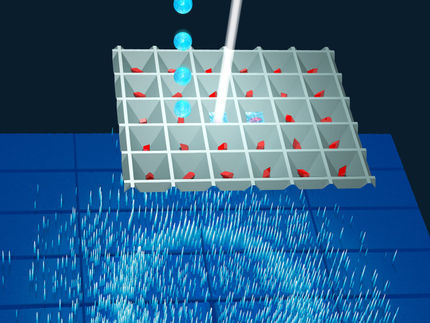New insights in survival strategies of bacteria
bacteria are particularly ingenious when it comes to survival strategies. They often create a biofilm to protect themselves from a hostile environment, for example during treatment with antibiotics. A biofilm is a bacterial community that is surrounded by a protective slime capsule consisting of sugar chains and “curli”. Scientists at VIB and Vrije Universiteit Brussel have for the first time created a detailed three-dimensional image of the pores through which the curli building blocks cross the bacterial cell wall, a crucial step in the formation of the protective slime capsule. In addition to the fundamental insights provided by this work, the new results could in the long-term also result in many useful applications.
Han Remaut (VIB/VUB): “By determining the three-dimensional structure, it is now possible to develop small molecules that fit like a stopper in the pore of the transporter. This inhibits the excretion of the curli building blocks and can prevent the formation of curli fibers and unwanted biofilms during infections or in industrial installations.”
Bacteria have other ingenious protection systems
Bacteria protect themselves against external stress factors by organizing as a biofilm. This allows pathogenic bacteria to defend themselves against treatment with antibiotics, or allows them to hide from the immune system. Bacteria also create biofilms in industrial installations, which can hamper the processes in the installation and result in blockages. Biofilms are bacterial communities that surround themselves with a protective slime capsule consisting of sugar chains and protein fibers or “curli”. In order to produce this protective slime capsule, bacteria use a modified transport system to deliver curli building blocks safely to the outside of the bacteria, so that the curli fibers can be produced there.
Transport system is crucial link in defense process
Parveen Goyal and Han Remaut (VIB/VUB) reported in Nature on a breakthrough in the unravelling of this curli transport system. Using X-ray crystallography, they succeeded for the first time in making a detailed three-dimensional image of the pore along which the curli building blocks are transported through the bacterial cell wall. Transporting these building blocks to the outside is a remarkable feat for the bacteria. It requires energy and as curli-forming bacteria have a double cell wall, they do not have access to the usual cellular motors that drive these transport channels. Parveen Goyal (VIB/VUB): “Based on the structure of the secretion channel, we are able for the first time to build a model of how bacteria can cross this barrier.”
Using biofilms for new applications?
Biofilms of non-pathogenic bacteria can also exhibit desirable properties that we can use for new applications. Han Remaut (VIB/VUB): “As they are able to polymerize by themselves and are extremely stable, curli fibers have great potential as building blocks for functional nano wires.” Curli fibers could be used as carriers for other proteins, thereby forming so-called functional biofilms. For example, by coating the curli fibers with proteins and enzymes that absorb, convert or break down specific substances, they can be used for waste water treatment or the conversion of biofuels. This requires further research, but the research group reported the first steps in this direction earlier this year.
Most read news
Organizations

Get the analytics and lab tech industry in your inbox
By submitting this form you agree that LUMITOS AG will send you the newsletter(s) selected above by email. Your data will not be passed on to third parties. Your data will be stored and processed in accordance with our data protection regulations. LUMITOS may contact you by email for the purpose of advertising or market and opinion surveys. You can revoke your consent at any time without giving reasons to LUMITOS AG, Ernst-Augustin-Str. 2, 12489 Berlin, Germany or by e-mail at revoke@lumitos.com with effect for the future. In addition, each email contains a link to unsubscribe from the corresponding newsletter.























































